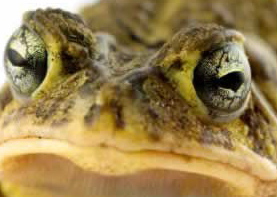Will Ultrasonic Frogs Unlock Secrets to the Earth’s Ecosystem?

Human hearing picks up only a limited range of frequencies, and that range diminishes as we age and our ears deteriorate—just think of the high-frequency cellphone rings that high school kids have begun to use because their older teachers can’t hear them.
However, just like telescopes designed to image in x-ray or infrared ranges have unlocked pictures previously unavailable to human eyes, new innovations have allowed us to detect sounds beyond our natural capabilities. Biologist Victoria Arch of UCLA has found something remarkable in those previously unheard ranges—a frog that communicates solely in ultrasonic frequencies
Scientists had known before that frogs were capable of such a thing, but the species native to Borneo that Arch and colleagues studied was the first amphibian even seen that communicates only in ranges beyond human hearing. “You see them calling, but you don’t hear anything,” Arch said about watching the frog in the wild.
Arch told Big Think that the scientists aren’t exactly sure why these frogs bother to do this, but there are several factors that could be in play. First of all, small animals have a hard time making low-frequency sounds, so Arch says that communicating in high frequencies is just more energy efficient for them and confers an evolutionary advantage. Secondly, she says, “there’s a lot of noise in their environment, with streams and rivers.” Calling and hearing on a high frequency could help these Borean amphibians hear one another over the clutter. There’s no evidence that frogs use ultrasonics to echolocate the way bats do, she says, but “that’d be cool.”
With these advantages available, it’s quite possible that far more animals use ultrasonic frequencies than we low-hearing humans know about. As technology expands our sphere of senses, don’t be surprised if we find a lot more chatter out there than we ever suspected.





